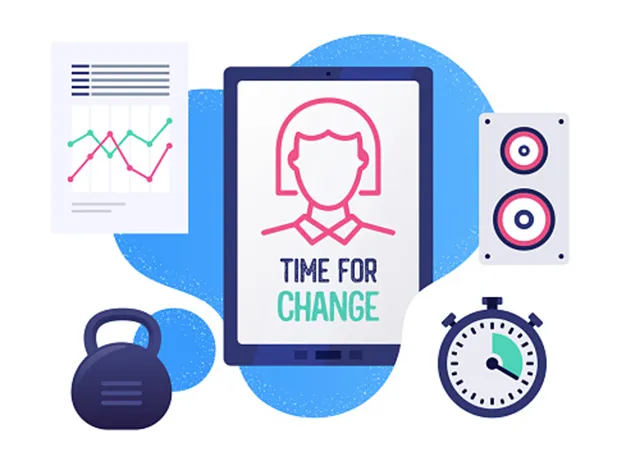
Menu

Menu

“I have all the data that is needed for the analysis? Where should I feed into?” guess the answer that we usually hear? That’s right. It’s EXCEL. Whatever data organization or process that we wanted to start-off with, our go to software is EXCEL. Despite discipline, it has been in use for more years.
We all use excel because we are so comfortable with it for years and years. It is a matter of fact that it is not ‘the most’ efficient tool especially when it comes to HRMS. Most prominently, during the initial process, HR needs certain type of data to be entered as listed below
♦ Basic information like name, date of birth, date of joining, contact information, gender details, email ids etc
♦ Information and documentation about the history of their employment
♦ Current information like his employee id, work location, reporting authority and so on
♦ Sensitive information such as their passport details, entry permit, emirates ID card and so on

For instance, let’s focus on the data that has to be changed in the leave management system. People’s date of join has to be updated for new hires based on which all types of leaves have to be updated, status of the leave has to be maintained, HR should get notified whenever it gets changed. It will be bootless when the data was not updated in the intended sheet instantly. Everyone cannot be given access to all the spreadsheets in the organization. Regular checks on the updates of the data itself consumes most of the time and it is prone to error too!

The organizational revolution has paved the way for interactive, customized, and communicative human resource management solutions. Thus, there are far better ways to manage peaks and valleys of EXCEL data. Adopting a leading HRMS with features like an Employee Leave/Vacation Processing portal represents a smart decision. This system allows employees to request leave approvals easily, which managers and HR can then review. Consequently, the process of approving or rejecting leave requests becomes simpler, helping organizations adapt to the ever-changing business environment. Furthermore, it effectively manages various types of leave requests simultaneously.
Leave management is just one component of the extensive human resource management functions that include employee attendance management, shift scheduling, applicant tracking, payroll processing, wellness management, and visa services, among others.
Updating records department-wise can significantly slow down productivity for everyone involved. When HR faces queries about employee details, the response often requires intensive effort and time. During crises, such as a pandemic, management expects HR to deliver results more rapidly than ever before. Consequently, implementing an HRMS tool proves far more effective and efficient. Relying on spreadsheets will not notify HR about outstanding sick notes, employee visa expirations, or essential training renewals—all of which require immediate attention.
A practical HRMS software solution should encompass critical features, including employee payroll processing, claims management, and leave management systems. Managers and administrators across departments should be able to access relevant details, facilitating smoother operations.

Today, businesses face significant knowledge gaps within their organizations. According to a report from the Society for Human Resource Management (SHRM), an overview of a test conducted in spring 2013 involved 240 individuals from the board’s membership database and 5,000 SHRM members who are HR administrators. Out of these, 391 responded. The report emphasized, “Without the flexibility offered by responsive migration strategies, global managers may lose their competitive edge, creating unfavorable economic conditions for existing businesses.”
Historically, HR departments managed manual accounting processes. However, companies are increasingly adopting modern HRMS technologies to eliminate many unproductive and unrelated services. Even small businesses must ensure that their methods for handling HR processes are scalable, especially as their workforce expands. In the context of hiring in the UAE, sensitive privacy information—including visa details, medical records, and nationality—poses a risk when shared via spreadsheets across departments. Although password protection is available, viewing sheets remains possible, leading to oversharing of sensitive data. At HRBluSky, we prioritize screening and control over all human resource information, ensuring that each individual can only access the information intended for them.
Research from the Salesforce team indicates that approximately 88% of all Excel sheets contain serious flaws. Specifically, these spreadsheets may have glitches in 1% or more of their formula cells. Despite various factors, it is all too easy to accidentally delete a cell or input data incorrectly. HRMS tools prioritize business objectives and strive to meet strategic goals. Therefore, let’s not allow error-prone methodologies to dilute business scope. Streamlining unnecessary tasks allows for greater focus on achieving goals.
Employers seek to access talent from around the world without limiting themselves to a specific region or country. However, hiring in a country like the UAE presents various challenges, particularly for foreign professionals. According to a report by the Council of Global Immigration, the ability to obtain work permit visas in a timely manner is critical for achieving organizational objectives. This urgency drives many companies in the UAE to adopt effective human resource management systems to simplify the hiring process. Various HR functions are involved in expanding a workforce in the UAE, including visa quota approvals, job offer contracts, work permit approvals, employment entry visas, medical screenings, and obtaining Emirates ID and health insurance cards.
Considering the time and complexity of these processes, it is clear why companies choose to outsource human resource management to a trustworthy solution like HRBluSky.
An advanced human resource portal integrates all HR-related information and offers interactive dashboard interfaces, enhancing user experience. Additionally, it includes a mobile application for employees working in shifts around the clock. Each user of the HR management software can have varied access controls based on the information they need to view. Reducing redundancy resolves many issues associated with EXCEL management. This dedicated HR management system features an easy-to-use employee self-service portal.
Given the critical nature of employment in the UAE compared to other regions, individuals looking to work in Dubai or organizations hiring from abroad must recognize the importance of a seamless employment experience. When a company aims to expand its workforce, it must be prepared to welcome talent from diverse geographic locations while adhering to existing HR regulations and compliance. Without an efficient human resource management tool, managing recruitment becomes a significant challenge.
While EXCEL has been a reliable tool for data management over the years, its limitations become glaringly apparent when applied to HR management. In fact, many organizations still rely on this software for various HR functions, often overlooking its inefficiencies. For example, as organizations grow, the complexity of managing employee data increases. This complexity makes it challenging to keep track of various records and ensure that everyone is on the same page. Transitioning to an HRMS allows organizations to leverage automation, ensuring that data is consistently accurate and readily available. Moreover, by consolidating HR processes within a single platform, businesses can significantly enhance their operational efficiency.
One of the most significant challenges of relying on EXCEL is the high likelihood of data entry errors. For instance, consider a scenario where multiple HR personnel are inputting data simultaneously; the potential for conflicting information skyrockets. With so many people accessing and modifying the same spreadsheet, inconsistencies can arise easily, leading to confusion and miscommunication. For example, if an employee updates their leave status in one spreadsheet but neglects to do so in another, it can create discrepancies that confuse HR teams and management alike. By implementing an HRMS, organizations can centralize data management, effectively mitigating the risk of errors and ensuring everyone works from the same reliable source. Additionally, an HRMS offers automated data validation features that can help flag potential inconsistencies before they lead to larger issues.
Furthermore, effective communication is crucial for any HR department, particularly in larger organizations where information flow can become disjointed. EXCEL spreadsheets can lead to siloed information, where HR personnel may not be aware of important updates or changes impacting their teams. In contrast, a comprehensive HRMS facilitates better collaboration among team members, providing real-time updates and notifications that keep everyone informed. For example, when an employee submits a leave request, both the manager and HR are notified immediately, fostering quicker decision-making. Moreover, an HRMS can integrate communication tools that enable instant messaging and document sharing, further enhancing collaboration across departments. Consequently, this streamlined communication process can help reduce misunderstandings and ensure that HR initiatives are executed more effectively.
In today’s fast-paced business environment, compliance is more critical than ever. Companies must adhere to various regulations regarding employee data, leave management, and payroll processing. However, with EXCEL, tracking compliance can be a cumbersome process, often involving manual checks and extensive documentation that consumes valuable time. In comparison, an HRMS simplifies compliance reporting through automated tools that generate reports quickly and accurately. For instance, an HRMS can automatically track employee certifications, ensuring that compliance-related information is always up-to-date. This not only saves time but also reduces the risk of potential penalties for non-compliance. Moreover, automated alerts can notify HR of upcoming compliance deadlines, enabling proactive management of essential HR functions.
Moreover, every organization has unique HR requirements based on its size, industry, and goals. While EXCEL offers basic functionalities, it lacks the customization necessary to meet specific HR needs effectively. For example, organizations with complex onboarding processes may find EXCEL insufficient for managing various documents and tasks. HRMS solutions, on the other hand, provide tailored features that align with organizational objectives. For instance, companies can customize workflows for onboarding, performance evaluations, and employee training, ensuring that HR processes are both efficient and effective. Additionally, this flexibility allows organizations to adapt quickly to changing business needs, such as integrating new compliance requirements or expanding their workforce.
Looking ahead, it is essential for organizations to embrace technology in their HR practices. As the workforce becomes increasingly mobile and remote, the demand for flexible HR solutions will only grow. Transitioning from EXCEL to an HRMS not only meets current needs but also prepares organizations for future challenges. Furthermore, as businesses expand globally, they must navigate various compliance landscapes and cultural differences, which can be complex without the right tools. By investing in a modern HR solution, businesses can stay competitive, agile, and responsive to evolving employee expectations. Additionally, the ability to analyze data trends and generate insights from an HRMS can significantly enhance strategic decision-making, positioning organizations for sustained growth.
The power of data analytics cannot be overstated in today’s data-driven world. An HRMS enables organizations to leverage analytics tools that provide valuable insights into workforce trends and performance metrics. For instance, organizations can analyze turnover rates, employee satisfaction surveys, and training program effectiveness to identify areas for improvement. By understanding these patterns, HR teams can develop targeted strategies to enhance employee engagement and retention. Moreover, data-driven insights empower HR leaders to make informed decisions that align with organizational objectives, ultimately driving business success.
As the business landscape evolves, so too do workforce trends. Remote work, gig employment, and increasing diversity are reshaping how organizations approach human resource management. An HRMS is essential for navigating these changes effectively. For example, with remote work becoming more prevalent, HRMS platforms can support flexible work arrangements by managing remote employee onboarding, performance tracking, and engagement initiatives. Additionally, advanced HR solutions can facilitate the hiring of gig workers and freelancers, ensuring that organizations can adapt to changing workforce dynamics. By proactively preparing for these trends, companies can maintain a competitive edge in attracting and retaining talent.
With a robust HR management solution like HRBluSky, human resource leaders can provide substantial strategic value to their organizations. Leveraging this powerful system allows HR to manage everything from visa processing to employee well-being tracking, offering insights that inform critical decision-making. Regularly, each resource can exchange vital information essential for the smooth flow of business operations. Thanks to its collaborative nature and strong import/export capabilities, users of our HRMS find it sophisticated and effective in managing end-to-end processes while benefiting from multi-layered security options for better data control. Interested in learning more about us? Visit our website now!
Alignment
Article
Audit
Automation
Benefits
Candidate
Communication
Compliance
Digitalisation
Digital Technology
Diversity
Emirates Id Application
Employee Experience
ESS
Feedback
Health and Safety
HRMS
HR Strategy
HR System UAE
Human Resource Management
Human Resource Management Systems
Job Roles
Learning and Development
Onboarding
Outsource
Payroll
Payroll Management System
Payroll Processing
Performance
Performance Management
Personalisation
Recruit
Recruiting
Recruitment
Remote Working
Rewards
Security
Service Providers
Skills
Smart
Survey
Virtual
Visa Cancellation
Work Environment
Workforce
© 2025 Pruvity HR Solutions Pvt Ltd, Madurai, India